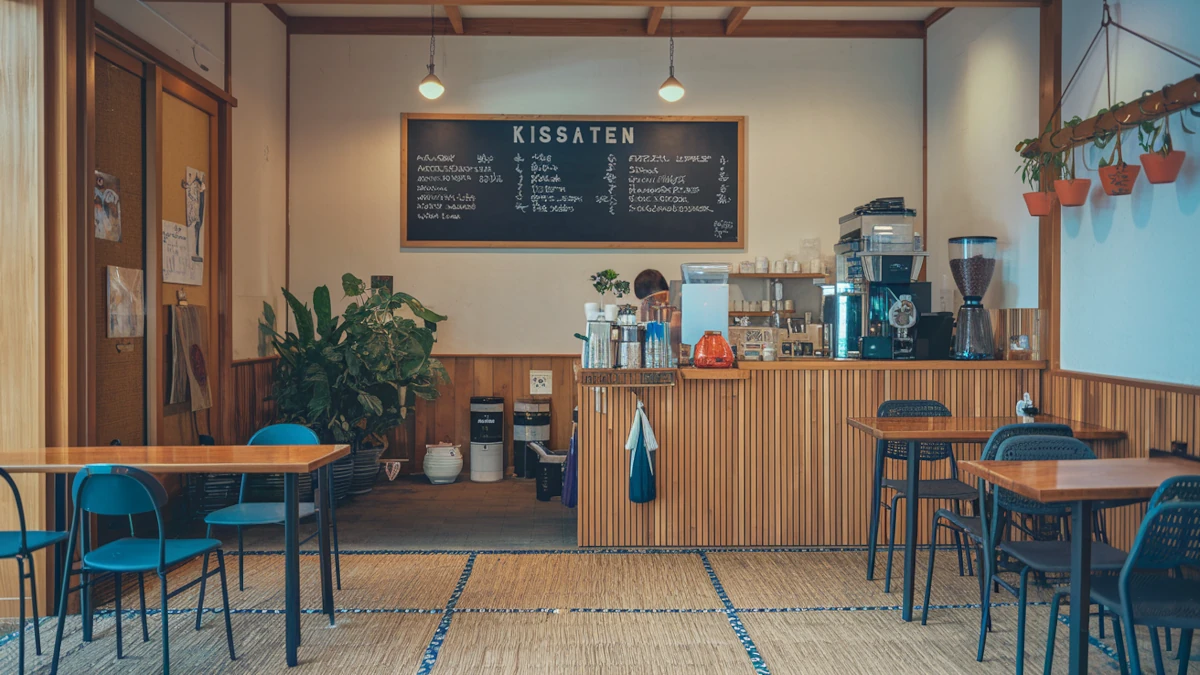Japanese coffee culture is a fascinating blend of tradition and modern innovation, showcasing how Japan transformed coffee from a niche import into a cultural staple. From the historical kissaten to the iconic canned coffee found in vending machines, Japan has uniquely redefined coffee consumption. This article explores the journey of coffee in Japan, delving into its historical roots, the rise of traditional coffeehouses, and modern innovations that have made Japanese coffee a global phenomenon.
Table of Contents
Historical Introduction of Coffee in Japan
Coffee’s Arrival in Japan
Coffee first arrived in Japan during the late 17th century, introduced by the Dutch East India Company. At the time, Japan was under strict isolationist policies enforced by the Tokugawa shogunate. Foreign trade was limited to Dejima, an artificial island in Nagasaki, where coffee—a niche commodity—was consumed primarily by the Dutch residents and a few Japanese locals. Among the Japanese, the island’s prostitutes were early adopters, using coffee to stay awake during long work hours.
Coffee and the Meiji Era
The Meiji Restoration in the late 19th century opened Japan’s borders to international trade, introducing coffee to a wider audience. In 1888, Tei Ei-kei established Japan’s first coffeehouse, Kahiichakan. Modeled after Western clubs, it offered amenities such as leather armchairs and billiard tables. However, its high costs and unsustainable business model led to its closure, marking the beginning of Japan’s journey to integrate coffee into its culture.
The Evolution of Kissaten: Japan’s Traditional Coffee Houses
The Golden Age of Kissaten
During Japan’s economic boom in the 1960s, kissaten flourished as cultural hubs. By the 1970s, there were approximately 50,000 kissaten nationwide, with this number peaking at 160,000 in the 1980s. These establishments offered cozy ambiances with low entry costs, attracting a wide range of patrons, from businessmen to artists.
Brewing Techniques and Cultural Touchstones
Kissaten became renowned for their meticulous brewing methods, often employing syphon and net filters to create a rich and flavorful cup. A popular choice was Tanzanian Kilimanjaro beans, celebrated for their similarity to Mount Fuji. These traditional techniques underscored the Japanese values of precision and attention to detail, elevating coffee preparation to an art form.
Modern Coffee Culture in Japan
Rise of Western-Style Cafés
The 1980s saw the emergence of Western-style cafés like Doutor Coffee, which offered self-service formats appealing to younger generations. Unlike the intimate atmosphere of kissaten, these modern chains prioritized convenience and accessibility. Doutor, with over 900 stores today, became a leading name in Japan’s coffee landscape.
Innovations in Brewing Equipment
Japanese companies such as Hario have made significant contributions to global coffee culture. Their high-quality brewing equipment, including the famous V60 dripper, has gained international acclaim. These innovations highlight Japan’s ability to blend tradition with cutting-edge technology.
The Convenience Revolution: Ready-to-Drink Coffee
The Introduction of Canned Coffee
In 1969, UCC Coffee revolutionized the market with the introduction of Japan’s first canned coffee: ‘UCC Coffee with Milk.’ The subsequent integration of vending machines in 1973 provided consumers with hot and cold options, cementing canned coffee as a staple of Japan’s on-the-go culture.
Instant Coffee and At-Home Brewing Trends
The 1980s marked a surge in the popularity of soluble coffee, with Nescafé emerging as a market leader. By 1983, instant coffee accounted for a significant portion of household consumption, making coffee accessible to a broader demographic.
Japanese Coffee Culture Today
Cultural Phenomenon
Today, Japanese coffee culture embodies precision and artistry, reflecting the nation’s dedication to quality. From the handcrafted cups served in kissaten to the high-tech vending machines offering a variety of options, coffee has become an integral part of daily life in Japan.
Global Influence
Japan’s innovative approaches have left a mark on international coffee trends. Products like canned coffee and brewing equipment such as the Hario V60 continue to influence global markets, showcasing Japan’s ability to adapt and innovate within the coffee industry.
Conclusion
Japan’s coffee journey is a testament to its cultural adaptability and innovative spirit. From the exclusive coffeehouses of Dejima to the bustling kissaten and modern café chains, Japanese coffee has evolved into a dynamic cultural phenomenon. By blending tradition with modernity, Japan has not only embraced coffee but has also enriched its global narrative. Whether you’re sipping on a meticulously brewed cup in a kissaten or grabbing a canned coffee from a vending machine, Japanese coffee offers a unique and unforgettable experience.

1 comment
Great job!